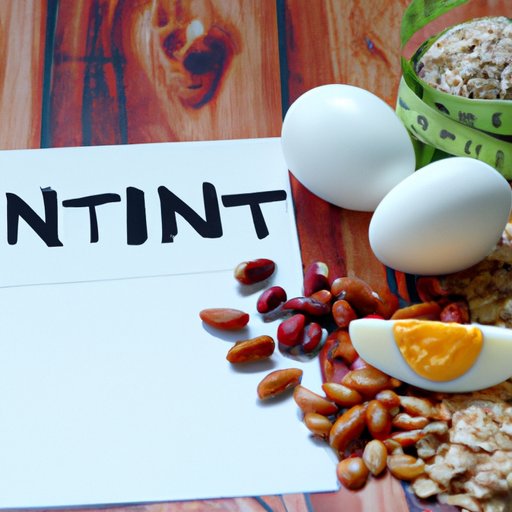
Introduction
Weight loss can be a difficult journey to embark on for many individuals. With so much information out there, it can be overwhelming to figure out where to even begin. This article aims to provide a comprehensive guide to fast and lose weight using various methods that have been shown to be effective. Whether you’re looking to reduce your carb intake, increase protein, or track your calories, we’ve got you covered. Read on to discover tips and strategies to help you reach your weight loss goals.
Intermittent Fasting
Intermittent fasting is a diet approach that involves cycles of eating and fasting, where individuals restrict their calorie intake during certain periods. There are different types of intermittent fasting, such as the 16/8 method, where individuals fast for 16 hours and eat within an 8-hour window. The main benefit of intermittent fasting is that it helps reduce overall calorie intake, thereby promoting weight loss. It also has other potential benefits, such as reducing inflammation and boosting metabolic health. To get started with intermittent fasting, ease into it by gradually increasing fasting times and having your last meal early in the evening. It’s also important to stay hydrated during fasting periods.
Time-Restricted Eating
Time-restricted eating is similar to intermittent fasting, but involves eating within a specific window of time each day. For example, an individual may choose to eat all their meals within a 10-hour window, and fast for the remaining 14 hours. This approach has been shown to promote weight loss by reducing overall calorie intake and improving metabolic health. To implement time-restricted eating, start by gradually increasing the fasting period and eating your meals earlier in the day. It’s important to avoid late-night snacking and stay hydrated during fasting periods.
Low-Carb Diets
Low-carb diets involve reducing carbohydrates in the diet and increasing protein and fat intake. This approach has been shown to be effective for weight loss because it helps reduce hunger and promotes satiety, leading to a reduction in overall calorie intake. Some examples of low-carb meals include eggs, avocado, lean meats, and non-starchy vegetables. You can also substitute high-carb foods with low-carb alternatives, such as cauliflower rice instead of regular rice. It’s important to track your carb intake and stay within the recommended range for your specific needs.
High-Protein Diets
Increasing protein intake can also be beneficial for weight loss, as it helps reduce hunger and promotes satiety. High-protein meals and snacks can also help preserve muscle mass during weight loss, which is important for maintaining metabolic health. Some examples of protein-rich foods include chicken, fish, tofu, nuts, and seeds. You can also incorporate protein supplements such as protein powders and bars. It’s important to track your protein intake and stay within the recommended range for your specific needs.
Calorie-Counting
Tracking daily calorie intake is an effective way to create a calorie deficit, which is necessary for weight loss. Calorie counting involves tracking the number of calories consumed and burned each day. There are various tools and apps available to help you track your calorie intake, such as MyFitnessPal. It’s important to note that while calorie counting can be effective for weight loss, it’s not suitable for everyone. It’s important to consult a healthcare professional before starting any weight loss program.
Exercise
Incorporating physical activity into a weight loss plan is crucial for long-term success. Regular exercise helps burn calories, preserve muscle mass, and improve overall health. To get started, aim to incorporate at least 30 minutes of moderate-intensity activity, such as brisk walking or cycling, five times per week. You can increase the duration and intensity as you progress. It’s important to choose activities that you enjoy and that fit into your lifestyle.
Mindful Eating
Mindful eating involves paying attention to what and how much you eat, and savoring each bite. It involves being present in the moment while eating and avoiding distractions such as phone or TV. Mindful eating can help reduce overeating and promote a healthier relationship with food. To cultivate mindful eating habits, try to eat slowly and savor each bite, pay attention to hunger and fullness cues, and avoid eating when emotionally upset.
Conclusion
Losing weight can be a challenging journey, but incorporating various methods such as intermittent fasting, time-restricted eating, low-carb diets, high-protein diets, calorie-counting, exercise, and mindful eating can make the process easier and more effective. Remember to consult a healthcare professional before starting any weight loss program and take it slow by gradually incorporating new habits into your routine. With patience and persistence, you can reach your weight loss goals and improve your overall health.





